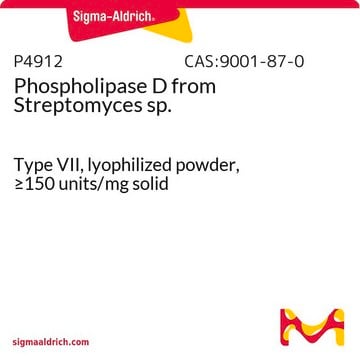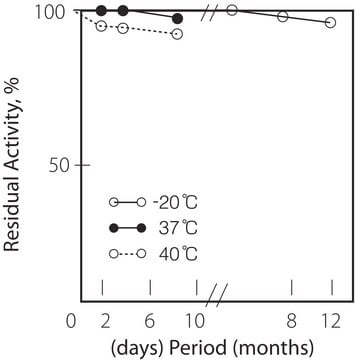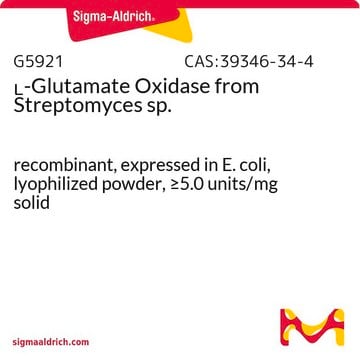SAE0044
Choline Oxidase from Arthrobacter sp.
recombinant, expressed in E. coli ≥12 units/mg protein
Synonyme(s) :
COD, COX, ChOx, Choline: oxygen 1-oxidoreductase
About This Item
Produits recommandés
Source biologique
bacterial (arthrobacter sp.)
Niveau de qualité
Produit recombinant
expressed in E. coli ≥12 units/mg protein
Forme
powder
Activité spécifique
≥12 units/mg protein
Technique(s)
activity assay: suitable
Numéro d'accès UniProt
Température de stockage
−20°C
Description générale
Choline oxidase from Arthrobacter sp. is a flavoprotein, which is a member of the glucose–methanol–choline (GMC). The codA gene encodes the choline oxidase enzyme.
Application
Actions biochimiques/physiologiques
Définition de l'unité
Notes préparatoires
Stockage et stabilité
persons
Mention d'avertissement
Danger
Mentions de danger
Conseils de prudence
Classification des risques
Resp. Sens. 1
Code de la classe de stockage
11 - Combustible Solids
Classe de danger pour l'eau (WGK)
WGK 3
Point d'éclair (°F)
Not applicable
Point d'éclair (°C)
Not applicable
Certificats d'analyse (COA)
Recherchez un Certificats d'analyse (COA) en saisissant le numéro de lot du produit. Les numéros de lot figurent sur l'étiquette du produit après les mots "Lot" ou "Batch".
Déjà en possession de ce produit ?
Retrouvez la documentation relative aux produits que vous avez récemment achetés dans la Bibliothèque de documents.
Les clients ont également consulté
Notre équipe de scientifiques dispose d'une expérience dans tous les secteurs de la recherche, notamment en sciences de la vie, science des matériaux, synthèse chimique, chromatographie, analyse et dans de nombreux autres domaines..
Contacter notre Service technique
















